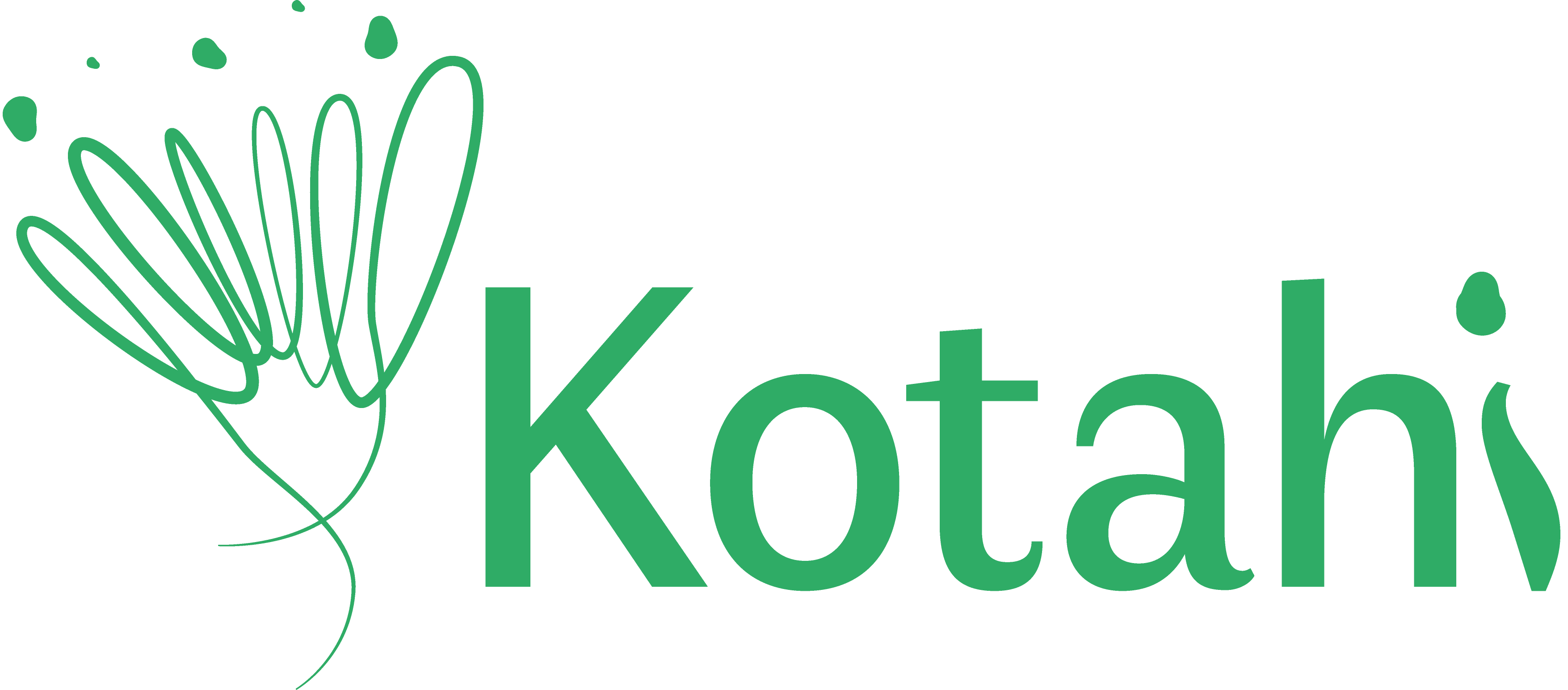Diabetes Management in Obesity Individuals and Its Prevalence
Vito Corleone1, Emmett Lathrop Brown2
1Department of Testing, Amnet Resedddarch University, TX, USA; 2 Department of Dev, Amnet Research University, TX, USA
Abstract: Lockdown and quarantine strategies due to Covid–19 scare have made routine health facility inaccessible to patients across the country. To combat this issue, Tele-consultation was identified as an interim solution where patients could avail the benefit of routine health check-up. We at AIIMS Mangalagiri started two e-consultation designs to tide over the crisis of lockdown and reach out to our patients. These were Call based (group I) and App based (group II). Patient response to these two modalities was compared over a period of 6 weeks. Total registration of 1836 patients was received (1598 in group I and 238 in group II). There was a statistically significant difference between the two groups in response to ease of registration process and consultation. Interpretation and Conclusion: In our experience, e-consultation through call based registration fared better than App based registration. The user friendly nature of call based registration design has made it a popular approach amongst our patients. We strongly recommend the use of e-consultation services by the patients in the current scenario of Covid–19 scare, thus helping the nation fight the dreadful infection by preventing its spread.
Keywords: Insulin medications obesity overweight type 2 diabetes mellitus weight gain weight loss.
Citation
lth conditions including type 2 diabetes mellitus (T2DM) cardiovascular disease musculoskeletal disorders and certain cancers. With the increasing prevalence of obesity it is important that healthcare professionals assess how their patients’ current disease states are being managed with medications and if any of those medications are exacerbating the issues surrounding weight in their patients. This concept especially holds true for the management of patients with T2DM.
Methods
Utilizing the PubMed database we queried primary and tertiary literature on the management of diabetes. Search terms related to anti-hyperglycaemics used in the treatment of T2DM effects on weight in patients with overweight and obesity classifications and other diabetes-related complications. In addition relevant practice guidelines and expert consensus recommendations for diabetes mellitus and weight management were referenced.10
Results
Mechanisms for overweight and obesity in patients with diabetes mellitus
While many factors play a role in the development of T2DM. The main features include a decline in insulin production by pancreatic beta cells and the presence of insulin resistance.9 Studies have demonstrated a variety of possible links between obesity and T2DM including insulin resistance pro-inflammatory cytokines endothelial dysfunction irregular fatty acid metabolism dysregulation of gastric emptying and appetite suppression and other cellular processes.2 Excess weight and fat distribution are related to hyperinsulinaemia and T2DM. It has been suggested that fat distribution plays a major role in determining the development of T2DM.12 Evidence further suggests that the link between the two is related to several “levels and factors of influence” or social determinants of health including lifestyle socioeconomic behavioural community and psychosocial factors such as diet physical activity and access to healthcare (fig 1).

Lifestyle considerations in patients with overweight or obesity
Achieving and maintaining a healthy weight incorporates healthy eating and physical activity. Modest and sustained weight loss can improve not only glycaemic control in patients with diabetes but also other cardiometabolic factors including blood pressure and lipid control. Throughout the literature there is a significant number of studies that show benefit in glycaemic control with lifestyle interventions. While there are debates about which type of diet is best it has been identified that significant weight loss can be achieved with lifestyle interventions that reduce total calories by 500–750 kcal/day.8 Counselling on nutrition at diagnosis and throughout the care process is emphasized by the American Diabetes Association and the American Association of Clinical Endocrinologists/American College of Endocrinology to support lifestyle modification and achieve weight loss.
In addition to dietary changes routine physical activity is essential for overall health in individuals with prediabetes and diabetes. It is especially important in those patients who need to lose weight. Aerobic exercises such as walking jogging and swimming can improve insulin sensitivity and moderate to vigorous exercise can substantially improve cardiovascular outcomes in patients with diabetes (fig 2, 3).


The effect of anti-hyperglycaemics on body weight
The management of diabetes mellitus includes medications that can cause weight gain weight loss or are weight neutral. As described in current practice guidelines patients with T2DM and overweight or obesity will benefit from selection of medications that not only entail efficacy in glycaemic control but consideration of the medication’s effect on weight. Choosing anti-hyperglycaemic agents that promote weight loss or at a minimum maintain weight neutrality is preferred in these patients.
Weight gain
While these medications are used with the intent to improve glycaemic control the benefits of better glycaemic control are sometimes offset by the weight gain that occurs. Common medications associated with weight gain include insulin secretagogues thiazolidinediones and insulin.
Insulin secretagogues
The classes of medications in this group include sulfonylureas and meglitinides (glinides). These agents mainly act by increasing insulin secretion either in a glucose independent or dependent manner. Sulfonylureas have demonstrated a high efficacy in lowering haemoglobin A1c but are known to cause weight gain and hypoglycaemia. Studies have also demonstrated that when added to other anti-hyperglycaemics sulfonylureas can be associated with a weight gain of up to 2.3 kg as compared to placebo. Meglitinides have a similar side effect profile as sulfonylureas but are generally less effective with regards to A1c lowering. Due to associated adverse effects including weight gain as well as possible diminished effectiveness over time sulfonylureas and meglitinides are not the preferred choice in patients with obesity.
Thiazolidinediones
Thiazolidinediones (TZDs) are known as insulin sensitizers that reduce insulin resistance in peripheral tissues and help to decrease hepatic blood glucose production. Mechanistically TZDs activate the peroxisome proliferator-activated receptor-γ which is a nuclear receptor that regulates the production of proteins involved in glucose and lipid homeostasis. Weight gain of up to 4.25 kg can be seen with the use of TZDs and is generally thought to be related to fluid retention and possible redistribution of adipose tissue. While TZDs provide a good option for glucose lowering in patients with T2DM in addition to weight gain these agents should be avoided in patients with cardiovascular disease and bone issues.
Insulin
While generally associated with type 1 diabetes-mellitus insulinis also used in a large proportion of patients with T2DM when pancreatic beta cell failure occurs as the disease progresses. Weight gain with use of insulin ranges between 1.56 and 5.75 kg. All types of insulins have been associated with weight gain but the extent of weight gain varies based on type of insulin and specific insulin regimen. The potential weight gain associated with insulin therapy can be attributed to an increase in caloric intake due to a fear of hypoglycaemia a reduction in glycosuria and an increase in fatty acid storage in adipose tissue. Meta-analyses have demonstrated weight gain to be positively correlated with insulin dose and a greater weight gain seen with premixed insulins than with basal insulin alone.
Weight neutral/weight loss
Presently there are medications available in the management of T2DM that offer weight neutrality or are associated with potential for weight loss. Common medications associated with weight neutrality include those in the dipeptidyl peptidase IV (DPP-IV) inhibitor drug class. Biguanides glucagon-like peptide 1 (GLP1) receptor agonists (RA) sodium–glucose cotransporter 2 (SGLT2) inhibitors alpha-glucosidase inhibitors and amylinomimetics offer weight loss (Table 1).
DPP-IV inhibitors
The medications included in the DPP-IV inhibitor drug class function to reduce degradation and prolong the action of active incretin such as GLP1 and gastric inhibitory polypeptide (GIP). In facilitating this mechanism DPP-IV inhibitors offer a balance in hyperglycaemic management related to glucose-dependent insulin release which in turns results in a reduced hypoglycaemic risk. The weight neutrality classification of DPP-IV inhibitors is thought to be explained mechanistically by two counterbalancing effects. First there is a reduced need for caloric intake from fast-acting carbohydrates to correct hypoglycaemic events which otherwise may be a property of weight gain. Furthermore the weight loss potential of reducing the degradation and prolonging the action of active incretins is limited and does not meet the same level of effects as otherwise seen with their GLP1 RA counterparts. Clinical evidence has demonstrated variability in weight outcomes when using DPP-IV inhibitors. In a meta-analysis including 13 trials DPP-IV inhibitors showed a small increase in body weight of 0.5 kg when compared to placebo. Additional clinical evidence has demonstrated variability in body weight changes of −1.4 kg to +1.8 kg dependent on variability in comparator groups and heterogeneity among trials. The culmination of evidence has resulted in the DPP-IV inhibitors being considered as having a weight neutral effect which may be favourable in patients who would benefit from weight management or mitigation from additional weight gain.
Biguanides
Metformin an insulin sensitizer used as a first line anti-hyperglycaemic agent in the management of T2DM and the only FDA-approved biguanide demonstrates mechanisms that support weight loss through hepatic central nervous system (CNS) gastrointestinal and gut microbiome effects. Historically reductions in caloric intake directly or indirectly related to common dose-dependent gastrointestinal adverse effects with metformin were believed to be the primary mechanisms for weight loss. Nausea diarrhoea bloating and alteration in taste (dysgeusia) were attributed to short-term weight loss in patients with obesity without diabetes. A study by Lee et al. showed a dose-dependent reduction in food quantity consumption (an anorectic effect) with metformin resulting in an 8.8 kg±0.3 kg weight loss in patients with non-insulin-dependent diabetes over 24 weeks. In the CNS metformin has been proposed to mediate appetite regulatory signals through incretins (such as GLP1) leptin and peripheral metabolites. Other proposed mechanisms for weight loss facilitated by metformin include reduced hepatic gluconeogenesis and modification in the gut microbiome. Respectively these mechanisms will reduce hyperinsulinaemia and facilitate short-chain fatty acids in decreasing the release of free fatty acids from adipocytes and suppress appetite regulating incretins.
GLP1 receptor agonists
GLP1 RAs function to heighten the activity of the human incretin hormone GLP1. Under normal physiological conditions GLP1 is a hormone produced in the L cells of the small intestines the alpha cells of the pancreas and various structures of the CNS. Each site of GLP1 action facilitates not only a glycaemic effect but also those that promote body weight reductions. GLP1 RAs will potentiate human GLP1 activity in the pancreas and distal small intestines to stimulate glucose-dependent insulin secretion and reduce glucagon secretion. The glucose-dependent nature reduces hyperinsulinaemia and additional weight gaining effects. Within the CNS GLP1 activity on vagal afferent neurons will induce slowing of gastric emptying promoting satiety. At the brainstem and hypothalamus sites within the CNS GLP1 facilitates suppression in appetite and subsequently a reduction in food consumption leading to reduced calorie intake.
Of the available GLP1 RAs the top three agents demonstrating good efficacy for weight loss as recognized by the American Diabetes Association and European Association for the Study of Diabetes are semaglutide liraglutide and dulaglutide.9
Semaglutide
A systematic review assessing weight loss potential of oral semaglutide across the eight-study PIONEER programme found dose-dependent changes in body weight ranging from −1 kg to −4.7 kg. Weight loss of oral semaglutide was greater in comparison to empagliflozin 25 mg daily liraglutide 1.8 mg daily and sitagliptin 100 mg daily. Additionally after 52 weeks patients treated with oral semaglutide observed significantly higher proportions of body weight loss of 5% or more versus placebo (oral semaglutide: 39.4% with 14 mg/day; 28.1% with 7 mg/day and 17.2% with 3 mg/day compared to 5.2% in the placebo group; p<0.001).
Liraglutide
Seven phase III RCTs evaluated potential for weight change with liraglutide in obese patients with liraglutide after 52 weeks. Liraglutide 1.8 mg daily demonstrated a higher potential for weight loss of at least 5% or more (24.4%) and maximum weight reductions of −4.3% compared to active oral anti-hyperglycaemics and exenatide extended release. The weight-loss potential of liraglutide 1.8 mg daily was further evaluated against other active comparators (oral anti-hyperglycaemics basal insulin or multiple dose insulin regimens) and consistently resulted in greater body weight reductions (2.8–5 kg) over at least 26 weeks in patients with T2DM and one trial demonstrated 40.4% of patients achieving at least a 5% weight loss after 56 weeks of therapy.
Dulaglutide
A statistical assessment of six trials evaluating dulaglutide efficacy and safety in patients with obesity and T2DM found dose-dependent weight loss; however the extent of weight loss varied based on background and/or comparator therapy. Overall dulaglutide at a dose of 1.5 mg weekly saw potential weight loss of 0.86–3.18 kg. The weight loss was identified to be at the greatest potential in patients with higher initial BMIs and when added to background metformin which resulted in 24–34% of patients losing at least 5% of body weight versus those on dulaglutide monotherapy (12–17%) or other background anti-hyperglycaemics (9–18%). The weight-loss potential was further evaluated for dulaglutide when patients were GLP1 RA-naive (−3.2 kg) or those that switched from another GLP1 RA (−1.6 kg). Subgroup evaluation hypothesized greatest weight reduction in patients with shorter duration of diabetes mellitus diagnosis and preserved renal function.
In 2020 dulaglutide received FDA approval for expanded dosing of dulaglutide to 4.5 mg weekly. In two expanded dosing trials there was evidence of additional weight loss potential in patients with obesity and T2DM not controlled on background metformin. Weight reductions for dulaglutide 3 mg weekly ranged from 3.9 kg to 4 kg (estimated treatment difference was −0.9 to −2.4 kg). Additionally superior weight loss was demonstrated as early as 12 weeks and sustained to 56 weeks in individuals receiving dulaglutide 4.5 mg weekly. Body weight reductions achieved at this new maximum dose ranged from 4.1 kg to 4.7 kg (estimated treatment difference −1.6 to −2.6 kg).
SGLT2 inhibitors
In the setting of hyperglycaemia the SGLT2 receptor found in the proximal convoluted tubule of the kidneys has increased expression. This results in an exaggerated glucose reabsorption at the SGLT2 receptor potentiating the hyperglycaemic state. In addition to glycaemic effects SGLT2 inhibitors reversibly block the SGLT2 receptor resulting in reduced reabsorption of filtered glucose from the tubular lumen and lowering of the renal threshold for glucose increasing glucose urinary excretion by ~75 g with an associated energy deficit of ~300 kcal daily lending to adipose tissue mass reductions. Another proposed mechanism for weight loss with the use of SGLT2 inhibitors is explained by extracellular volume loss due to increased polyuria and osmotic diuretic effects.
Canagliflozin
A systematic review and meta-analysis assessing the effect of canagliflozin use on body weight after 12 months canagliflozin 100 and 300 mg resulted in a weight loss of 3.08% and 3.45% respectively. Other trials assessing canagliflozin 100 and 300 mg in patients with diabetes found a dose-dependent weight loss from baseline to 26 weeks of 1.9 kg and 2.9 kg. This effect was further sustained in the analysis evaluating effect after 56 weeks. When canagliflozin 100 or 300 mg were added to oral anti-hyperglycaemics such as metformin or a secretagogue weight reductions of 2.0–3.6 kg and 3.1–4.4 kg respectively were demonstrated over 52 weeks.
Dapagliflozin
Dapagliflozin 10 mg daily has demonstrated total body weight changes of −2.96 to −3.5 kg over 24 weeks in patients with overweight or obesity and T2DM. In addition to body weight changes changes in adiposity markers were noted. A waist circumference decrease of 1.52 cm (p = 0.0143) and change in body fat mass of −2.22 kg resulted. Bolinder et al. noted in their study that more than 30.5% of patients enrolled achieved a body weight decrease of 5% or greater.
A meta-analysis of 10 studies evaluating empagliflozin in patients with T2DM demonstrated a body weight loss of −1.85 kg compared to placebo. A randomized controlled trial looked to evaluate the effect of empagliflozin on adiposity indices in patients with T2DM. In addition to finding body weight results up to −1.7 kg to −1.9 kg changes in waist circumference of −1.3 cm and percent total body of −0.2 to −0.3% were noted.67 When evaluating empagliflozin as monotherapy in patients with T2DM body weight changes of −1.8 kg to −2.3 kg and −2.0 kg to −2.6 kg were demonstrated when administering empagliflozin 10 mg daily and 25 mg daily respectively versus placebo or sitagliptin.
α-Glucosidase inhibitors
α-Glucosidase inhibitors (AGIs) such as acarbose competitively inhibit enteric α-glucosidase delaying the hydrolysis of oligosaccharides and disaccharides to glucose and other monosaccharides at the brush border of the small intestine. The mechanism induces a prolonged absorption of carbohydrates resulting in a dose-dependent reduction in postprandial serum insulin. This insulin-sparing mechanism along with improved insulin sensitivity with long-term use of AGIs support body weight reductions seen in clinical trials.
As demonstrated with other anti-hyperglycaemics that offer weight loss potential clinical evidence regarding the weight reductions with acarbose suggest variability dependent on the comparator group and underlying concomitant medication use. In a study that evaluated acarbose use in a patient population with T2DM and limited changes to lifestyle demonstrated a 0.46 kg loss after 12 months. A median weight reduction of 3.5 kg was achieved when acarbose 100 mg three times daily was added on to a sulfonylurea in a group of patients with T2DM. When weight loss efficacy was compared between acarbose and DPP-IV inhibitors in a meta-analysis of randomized controlled trials acarbose demonstrated superiority (p<0.05). There was a mean difference of −1.23 kg favouring acarbose. A pooled study of post-marketing surveillance studies from around the world found an absolute reduction in body weight of −1.16±2.57 kg (−0.98±2.11 kg in patients with overweight and −1.67±3.02 kg in patients with obesity). Overall 6.68% and 9.98% of patients with overweight and obesity respectively achieved a body weight reduction of at least 5% over the 3-month study period.72
Amylinomimetics
Pramlintide a synthetic analogue of human amylin functions to mimic the function of the 37-amino acid neuroendocrine peptide hormone and acts on the hindbrain at the amylin receptor to reduce postprandial hyperglycaemia. This anti-hyperglycaemic mechanism is facilitated through reduction in glucagon release delayed gastric emptying and centrally mediated appetite suppression. Consequently pramlintide has demonstrated a decrease in food intake and body weight both in animal and human studies.
Table 1.1 Weight effects of FDA-approved anti-hyperglycaemics for diabetes mellitus.
Weight gain | Weight neutral | Weight loss | ||||||
Drug class | Generic drug name | Effect on body weight (△ in kg) | Drug class | Generic drug name | Effect on body weight (△ in kg) | Drug class | Generic drug name | Effect on body weight (△ in kg) |
Sulfonylureas | Glimepiride76 Glipizide77 Glyburide78 | −0.2 to +2.0 +0.5 −0.4 to + 3.8 | Dipeptidyl Peptidase IV Inhibitors31–33 | Alogliptin Linagliptin Saxagliptin Sitagliptin | No effect | Biguanides | Metformin34–39 | −0.64 to −8.8 |
Meglitinides | Nateglinide79 Repaglinide | +1.0 to +3 +0.3 to +5.5 |
|
| Glucagon-like peptide 1 receptor agonists | Dulaglutide55 Exenatide ER90 Liraglutide91 Lixisenatide92 Semaglutide9394 | −3.1 to −4.7 −1.1 to −2.9 −3.3 to +0.3 −0.1 to −2.7 −1.2 to −6.0 |
Conclusion
Clinical guidelines have supported the selection of anti-hyperglycaemics that may also be leveraged to contribute to weight management in patients with overweight or obesity and with diabetes. As demonstrated in the clinical evidence agents with the greatest weight loss potential include those in the GLP1 RA SGLT2 inhibitor biguanide AGI and amylinomimetic drug classes. In addition to lifestyle modifications with diet and physical activity the preference for anti-hyperglycaemic agents that not only support achievement of glycaemic targets but also weight-loss goals should be considered in the clinical decision-making process of an individual patient.
Disclosure and potential conflicts of interest: The authors declare that they have no conflicts of interest relevant to this manuscript.
Acknowledgements: None.
Funding declaration: There was no funding associated with the preparation of this article.
Copyright: Copyright © 20xx
Correspondence: Jennifer J D’Souza Midwestern University 555 31st Street Downers Grove IL 60515 USA. Email: jdsouz@midwestern.edu
Submitted: 19 November 2021; Accepted: 28 March 2022; Publication date: 4 May 2022.
References
Hollander JE, Carr BG. Virtually Perfect? Telemedicine for Covid–19. N Engl J Med. 2020;382(18):1679–1681. doi:10.1056/NEJMp2003539
Bashshur RL, Doarn CR, Frenk JM, Kvedar JC, Woolliscroft JO. Telemedicine and the COVID–19 Pandemic, Lessons for the Future. Telemed J E Health. 2020;26(5):571–573. doi:10.1089/tmj.2020.29040.rb
Greenhalgh T, Wherton J, Shaw S, Morrison C. Video consultations for covid–19. BMJ. 2020;368:m998. doi:10.1136/bmj.m998
Ohannessian R, Duong TA, Odone A. Global Telemedicine Implementation and Integration Within Health Systems to Fight the COVID–19 Pandemic: A Call to Action. JMIR Public Health Surveill. 2020;6(2):e18810. doi:10.2196/18810
Dorsey ER, Topol EJ. State of Telehealth. N Engl J Med. 2016;375(2):154–161. doi:10.1056/NEJMra1601705
Portnoy J, Waller M, Elliott T. Telemedicine in the Era of COVID–19. J Allergy Clin Immunol Pract. 2020;8(5):1489–1491. doi:10.1016/j.jaip.2020.03.008
Mehrotra A, Ray K, Brockmeyer DM, Barnett ML, Bender JA. Rapidly Converting to “Virtual Practices”: Outpatient Care in the Era of Covid–19. NEJM Catalyst Innovations in Care Delivery. 2020. doi:10.1056/CAT.20.0091
Kruse CS, Karem P, Shifflett K, Vegi L, Ravi K, Brooks M. Evaluating Barriers to Adopting Telemedicine Worldwide: A Systematic Review. J Telemed Telecare. 2018;24(1):4–12. doi:10.1177/1357633X16674087
Hollander JE, Carr BG. Virtually Perfect? Telemedicine for Covid–19. N Engl J Med. 2020;382(18):1679–1681. doi:10.1056/NEJMp2003539
Ateriya N, Saraf A, Meshram VP, Setia P. Telemedicine and virtual consultation: The Indian perspective. Natl Med J India 2018;31:215–8
Chellaiyan, Vinoth G et al. “Telemedicine in India: Where do we stand?.” Journal of family medicine and primary care vol. 8,6 (2019): 1872–1876
Keesara S, Jonas A, Schulman K. Covid–19 and Health Care’s Digital Revolution. N Engl J Med. 2020;382(23):e82. doi:10.1056/NEJMp2005835
Hollander JE, Carr BG. Virtually Perfect? Telemedicine for Covid–19. N Engl J Med. 2020;382(18):1679–1681. doi:10.1056/NEJMp2003539
Bashshur RL, Doarn CR, Frenk JM, Kvedar JC, Woolliscroft JO. Telemedicine and the COVID–19 Pandemic, Lessons for the Future. Telemed J E Health. 2020;26(5):571–573. doi:10.1089/tmj.2020.29040.rb
Greenhalgh T, Wherton J, Shaw S, Morrison C. Video consultations for covid–19. BMJ. 2020;368:m998. doi:10.1136/bmj.m998
Ohannessian R, Duong TA, Odone A. Global Telemedicine Implementation and Integration Within Health Systems to Fight the COVID–19 Pandemic: A Call to Action. JMIR Public Health Surveill. 2020;6(2):e18810. doi:10.2196/18810
Summary
Murali Kasiraman
acc
Metadata
Type of Research Object:


